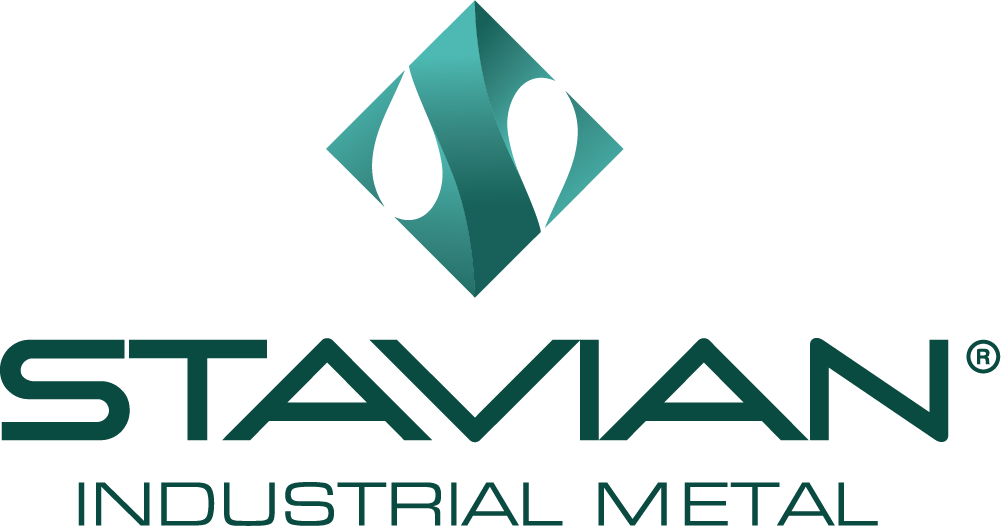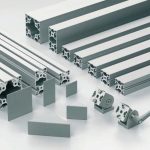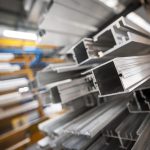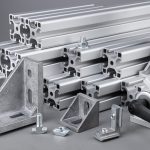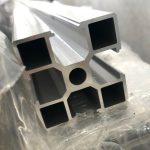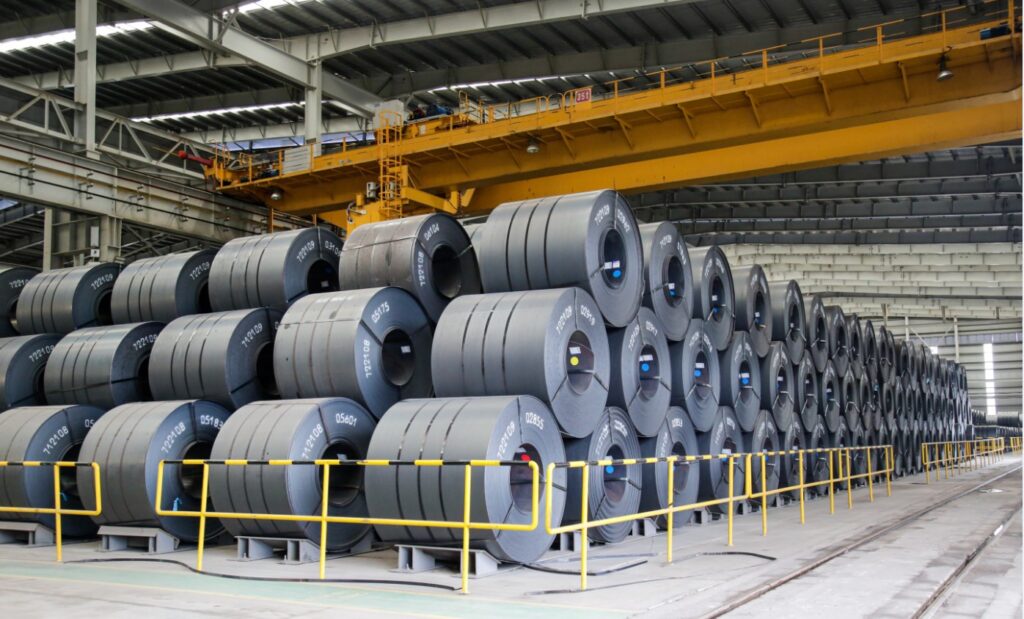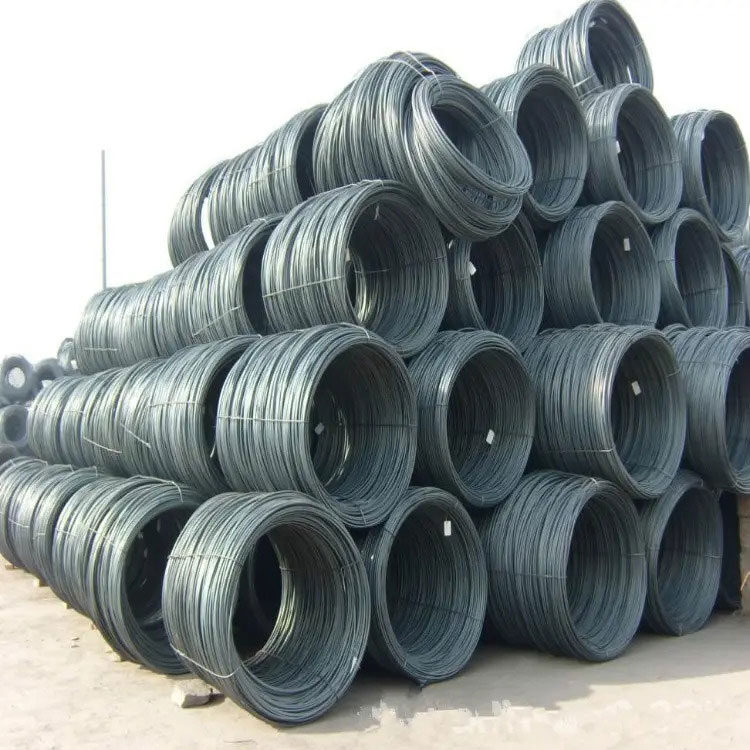| Item | Description |
| Surface Treatment | Powder coating, anodizing … |
| Processing services | Cutting, drilling, punching … |
| Alloy series | 6005, 6063, 6061 … |
| Quality Standard | JIS, EN, ASTM… |
| Quality Management System | ISO 9001:2015, ISO 14001:2015, ISO 45001:2018… |
Aluminum Extrusion
Stavian Industrial Metal provides a variety of aluminum extrusion products, which are widely used in fields such as aerospace, transportation, new energy vehicles, marine ships, military equipment, power, radiators, photovoltaics (solar system), robotics, healthcare equipment, interior and exterior furniture…
Stavian Industrial Metal provides OEM/ODM services, customized design upon customers’ requirements at a competitive price and high volume.
Aluminum extrusion is a versatile and flexible material widely used in everyday life. From construction to household appliance manufacturing, aluminum extrusion plays a crucial role in various fields. In this article, Stavian Industrial Metal will help you understand the characteristics, advantages, disadvantages, and how to choose a reputable supplier of aluminum extrusion products.
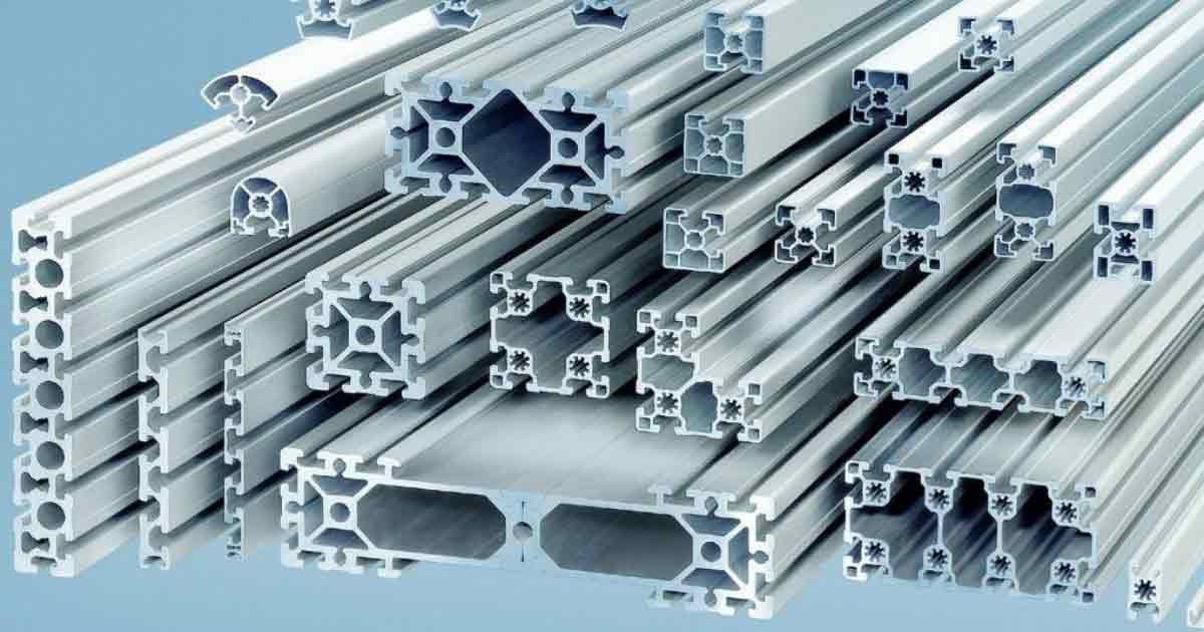
Understanding aluminum extrusion in the industrial metal field
What is aluminum extrusion?
Aluminum extrusion is a type of aluminum bar produced through a process where a billet is heated and then forced through a steel die under high pressure to create the desired shape. This process results in aluminum bars with high dimensional accuracy and uniform structure.
After being cut to the desired sizes, these aluminum bars undergo aging treatment to increase hardness and mechanical strength, making them suitable for various applications in different industries. This production method is ideal for large-scale manufacturing, requiring precision and uniformity in the final product.
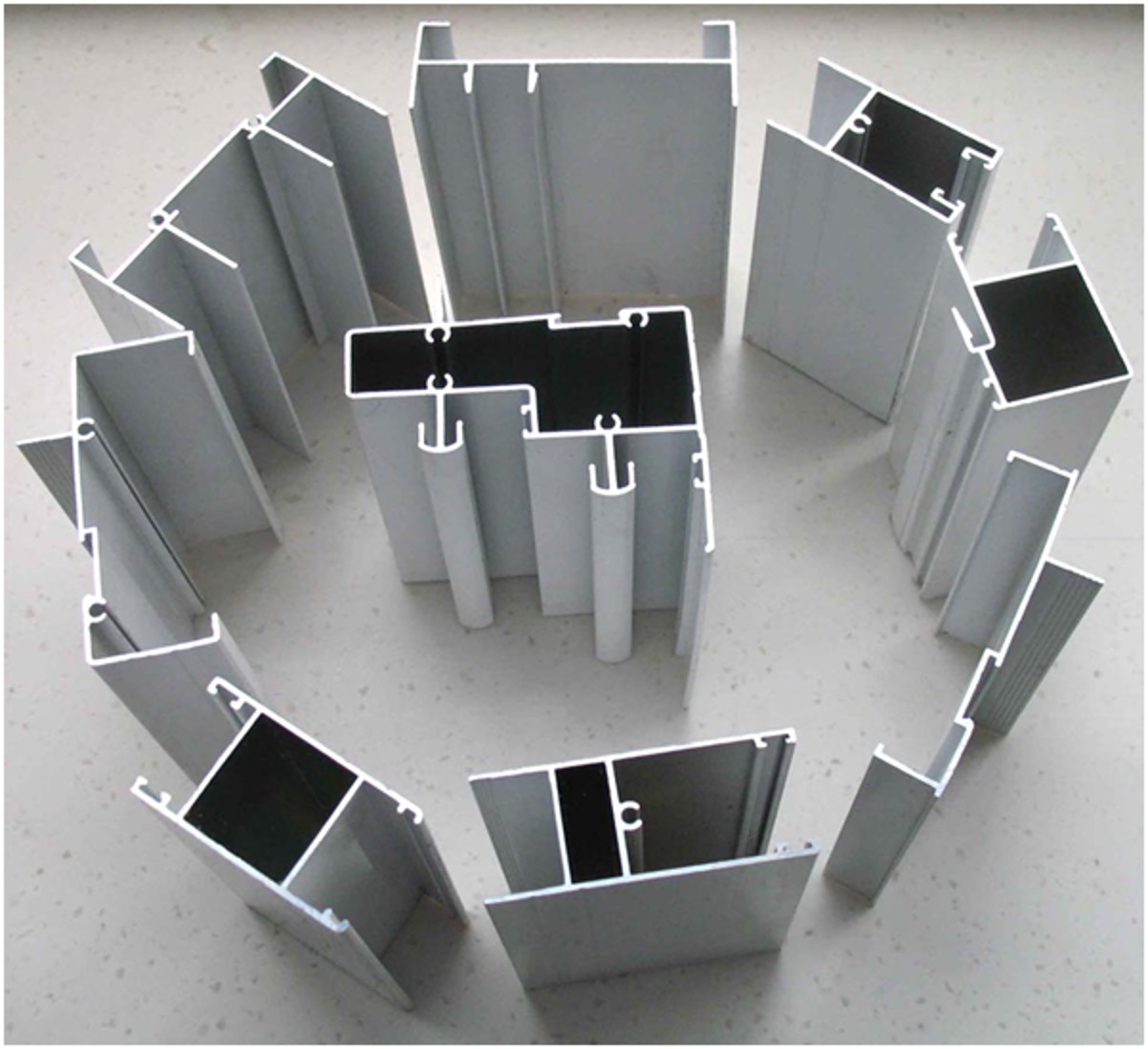
Aluminum extrusion is produced by heating a billet and then forcing it through a steel die under high pressure to create the desired shape.
Advantages and disadvantages of aluminum extrusion
Advantages of aluminum extrusion
Aluminum extrusion is widely used in life due to the following outstanding advantages:
- Lightweight: Products made from aluminum extrusion are lightweight, suitable for many applications, from construction projects to industrial manufacturing, helping to reduce transportation and installation costs.
- High Durability: Aluminum extrusion can withstand harsh environments and temperature changes, providing long lifespan and good durability.
- Protective Surface: The surface of the product can be coated with powder coating or anodizing to enhance aesthetics and durability in harsh environments.
- Good Thermal Conductivity: Aluminum extrusion has good thermal conductivity, which helps create optimal shapes for heat conduction in industrial applications.
- Ease of Operation: The extrusion process is easy to operate and flexible, not causing interruptions in production, and requires only minor adjustments in settings when necessary.
- Complex Shaping: Aluminum extrusion can create parts with complex cross-sections, with lower operating costs compared to other forming methods.
- High Precision: Aluminum extrusion products have high dimensional accuracy, ensuring consistency and precision in production.
- Good Surface Finish: The surface of aluminum extrusion products can be finished in various ways, from mirror-like shine to matte, depending on usage requirements.
The process of heating aluminum billets to create aluminum extrusion forms predetermined cross-sections, providing convenience and numerous benefits for consumers in various applications.
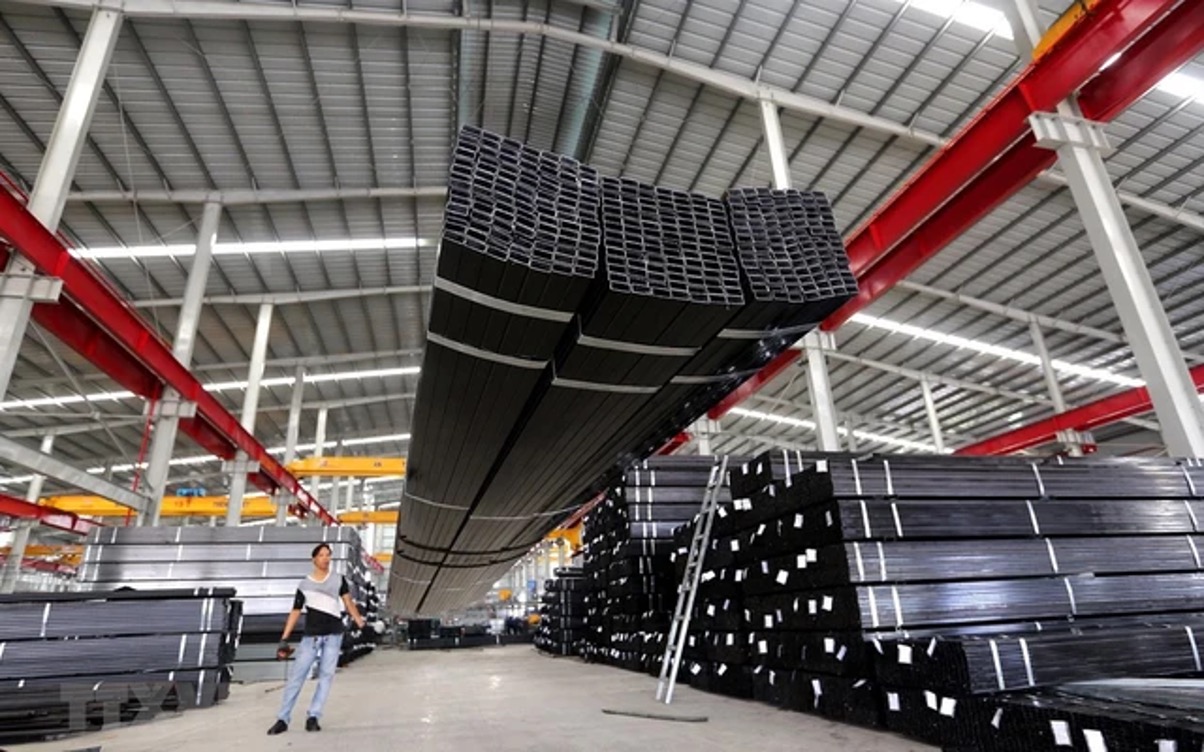
Aluminum extrusion brings many advantages to construction projects
Disadvantages of Aluminum Extrusion
The disadvantages of aluminum extrusion include:
- Initial Investment Cost: The steel dies used in the extrusion process have a limited lifespan, requiring significant investment to replace them to maintain product quality.
- Product Shape Limitations: The aluminum extrusion process only produces bar-shaped products with the same cross-sectional profile, limiting flexibility in designing and manufacturing products with complex shapes.
Comparison between aluminum extrusion and cast aluminum
Both aluminum extrusion and cast aluminum production processes have their distinct advantages and some limitations. Depending on the specific needs and applications of each type of aluminum, you can choose the appropriate aluminum production process for your project. Below is a detailed comparison between aluminum extrusion and cast aluminum.
| Criteria | Aluminum Extrusion | Cast Aluminum |
| Shape | Diverse but limited to cross-sectional profiles. | Complex shapes. |
| Size | Limited in size compared to the initial billet. | Larger than the initial billet. |
| Hardness | Very high with hardening measures. | Lower and more prone to porosity if air is trapped. |
| Surface | Smooth and fine. | Rough with imperfections. |
| Mold Benefits | Quick mold making and production. | Expensive and time-consuming. |
| Adaptability | Highly adaptable and flexible. | Low, requiring significant time and cost. |
| Cost | Less expensive, suitable for quick production. | Expensive, suitable for long production runs. |
Common aluminum types used for extrusion
Alloys 6005, 6061, and 6063
Aluminum alloys such as 6005, 6061, and 6063 have proven to have good heat treatment capabilities, effective electrical conductivity, and high wear resistance, even when placed in harsh environmental conditions. These aluminum billets are produced annually in large quantities to serve various applications such as aluminum frame doors, industrial component manufacturing, high-rise building construction, and heat sink production.
The technical standards for aluminum extrusion products are usually defined based on the chemical and mechanical properties of the alloys, such as 6005, 6061, and 6063. This ensures that the final product meets the desired quality and performance standards. Below is a table of the chemical composition and mechanical property standards for the mentioned alloys:
| Aluminum Grades | Si | Mg | Mn | Cu | Fe | Cr | Zn | Ti | Impurities | Al | |
| Individual | Total | ||||||||||
| 6005 | 0,5÷0,9 | 0,4÷0,7 | ≤0,5 | ≤0,3 | ≤0,35 | ≤0,3 | ≤0,2 | ≤0,1 | ≤0,05 | ≤0,15 | Remainder |
| 6061 | 0,4÷0,8 | 0,8÷1,2 | ≤0,15 | 0,15÷0,4 | ≤0,7 | 0,04÷0,35 | ≤0,25 | ≤0,15 | ≤0,05 | ≤0,15 | Remainder |
| 6063 | 0,2÷0,6 | 0,45÷0,9 | ≤0,1 | ≤0,1 | ≤0,35 | ≤0,1 | ≤0,1 | ≤0,1 | ≤0,05 | ≤0,15 | Remainder |
The physical and mechanical property requirements of alloys 6005, 6063, and 6061 are as follows:
| Alloy | Heat Treatment | Thickness at Measuring Point (mm) | Tensile Strength (N/mm²) | Yield Strength (N/mm²) | Elongation (%) | Hardness | |
| A50mm | A | Hw | |||||
| 6005 | T5 | ≤ 8 | ≥ 250 | ≥ 200 | – | ≥ 8 | ≥ 9 |
| T6 | ≤ 5 | ≥ 270 | ≥ 225 | ≥ 6 | ≥ 8 | ≥ 10 | |
| Over 5 to 10 | ≥ 260 | ≥ 215 | ≥ 6 | ≥ 8 | ≥ 12 | ||
| Over 10 to 25 | ≥ 250 | ≥ 200 | ≥ 6 | ≥ 8 | ≥ 12 | ||
| 6061 | T5 | ≤ 6 | ≥ 240 | ≥ 205 | ≥ 8 | ≥ 7 | ≥ 12 |
| T6 | ≤ 6 | ≥ 265 | ≥ 245 | ≥ 8 | ≥ 7 | ≥ 14 | |
| Over 6 | ≥ 260 | ≥ 240 | ≥ 10 | – | ≥ 14 | ||
| Alloy | Heat Treatment | Thickness at Measuring Point (mm) | Tensile Strength (N/mm²) | Yield Strength (N/mm²) | Elongation (%) | Hardness | |||
| A50mm | A | Min Thickness at Measuring Point (mm) | HV5 | Hw | |||||
| 6063 | T5 | ≤ 12 | ≥ 150 | ≥ 110 | ≥ 8 | ≥ 7 | ≥ 0,8 | ≥ 58 | ≥ |
| Over 12 to 25 | ≥ 145 | ≥ 105 | ≥ 8 | ≥ 7 | |||||
| T6 | ≤ 3 | ≥ 205 | ≥ 170 | ≥ 8 | – | – | – | ≥ 12 | |
| Over 3 to 25 | ≥ 205 | ≥ 170 | ≥ 10 | – | – | – | ≥ 12 | ||
In this context:
- A50 mm: Represents the elongation percentage over 50mm of the gauge length.
- A: Represents the elongation percentage at 5.65mm of the gauge length (cross-sectional area of the parallel part of the sample, mm²).
- Hw: Is the unit measuring the hardness of extruded and cast aluminum using specialized hardness testing tools.
Series 7000 Aluminum Alloys with Medium Strength
Series 7000 aluminum alloys have always been highly regarded since aluminum was first used in daily life. They are characterized by high strength, self-hardening and self-recovery of mechanical properties, creating reliability and superior performance. In this product range, aluminum alloys such as 7020, 7005, and 7003 are commonly used for rail bar rolls or welded structures, meeting demands in various industrial and construction applications.
High-Strength Aluminum Alloys in Series 2000 and Series 7000
Aluminum alloys in series 2000 and series 7000, known for their high strength, are particularly valued for their machinability and mechanical properties, especially among commonly used alloys for extrusion. Types such as 2014, 2024, and 2017 in series 2000, and 7075, 7021 in series 7000 fall into this category. They are typically used in aircraft structures and manufacturing technology, though they are rarely used in welding due to their relatively poor quality in this regard.
Non-Heat-Treatable Aluminum Alloys in Series 3000 and Extruded Alloys in Series 5000
Non-heat-treatable alloys in series 3000 and extruded alloys in series 5000 are known for their good mechanical properties and high wear resistance. However, they are limited in workability, so extruded aluminum products often have simple shapes. Their common applications include road signs, boats, decorative items, architectural applications, and cold containers.
Overall, there are four main types of aluminum alloys used for the extrusion method introduced by Stavian Industrial Metal.
What Shapes Can Aluminum Extrusion Be Formed Into?
Aluminum extrusion is a flexible material capable of withstanding various pressures and can be shaped into many different forms to suit specific applications. Here are the common shapes that extruded aluminum can be manufactured into:
- Solid: This is the most common shape of extruded aluminum, where the product has no gaps or openings. Finished products can be bars, beams, or angles and are often used in applications requiring high rigidity.
- Hollow: This shape includes products with one or more hollow spaces, usually in the form of square or rectangular tubes. Hollow products are often used in applications requiring lightweight and ventilation, such as in the aerospace and marine industries.
- Semi-Hollow: Some extruded aluminum products are created with a partial hollow space, usually including a “C” channel with a narrow slit. This shape is common in applications needing a combination of flexibility and strength.
Additionally, extruded aluminum can be made into various other shapes like round tubes, oval shapes, channels, Z-profiles, T-profiles, H-profiles, I-beams, L-profiles, and many other forms depending on specific application requirements. This demonstrates the versatility and diversity of extruded aluminum in many industrial and construction fields.
Key Factors Affecting the Quality of Extruded Aluminum Products
Several factors affect the quality of extruded aluminum products, including:
- Type of Extrusion Process: The extrusion process can be divided into two main types: direct and indirect extrusion. In direct extrusion, the ram’s movement and the metal flow occur in the same direction. In contrast, in indirect extrusion, each extrusion stage produces products with different quality levels.
- Extrusion Pressure: Extrusion pressure is crucial, especially regarding the pressure required to initiate metal flow and overcome the friction between the billet, the die, and the chamber. The pressure range typically varies from 800 MPa to 1200 MPa to ensure product quality.
- Friction Between the Billet and the Die, or Chamber and Die: Friction between surfaces is essential in both direct and indirect extrusion processes. Reducing or eliminating this friction helps control metal flow, decreases the power required for compression, and improves the final product’s quality.
- Type and Design of the Die: The die design determines the mechanical behavior of the metal during extrusion. Dies can be solid, semi-hollow, or hollow, depending on the final product’s requirements.
- Lubrication: Lubrication is necessary to assist the extrusion process and reduce friction between the metal and the die. Common lubricants are made from oil, graphite, or glass powder.
- Type of Aluminum Alloy: The choice of aluminum alloy is based on specific product requirements, with series categorized by their main alloying elements.
- Extrusion Temperature: The extrusion process typically occurs at high temperatures, facilitating robust metal flow and producing defect-free final products.
- Extrusion Ratio: The ratio between the billet and the cross-sectional area of the die opening affects the deformation of the product. A higher extrusion ratio requires higher extrusion pressure and results in greater product deformation.
- Extrusion Speed: The speed at which the metal flows through the die also impacts product quality. Higher extrusion speeds require higher extrusion pressures and generate higher exit temperatures.
- Billet Length: The billet length affects the deformation and extrusion ratio of the material, as well as the required extrusion pressure. The longer the billet, the higher the necessary extrusion pressure.
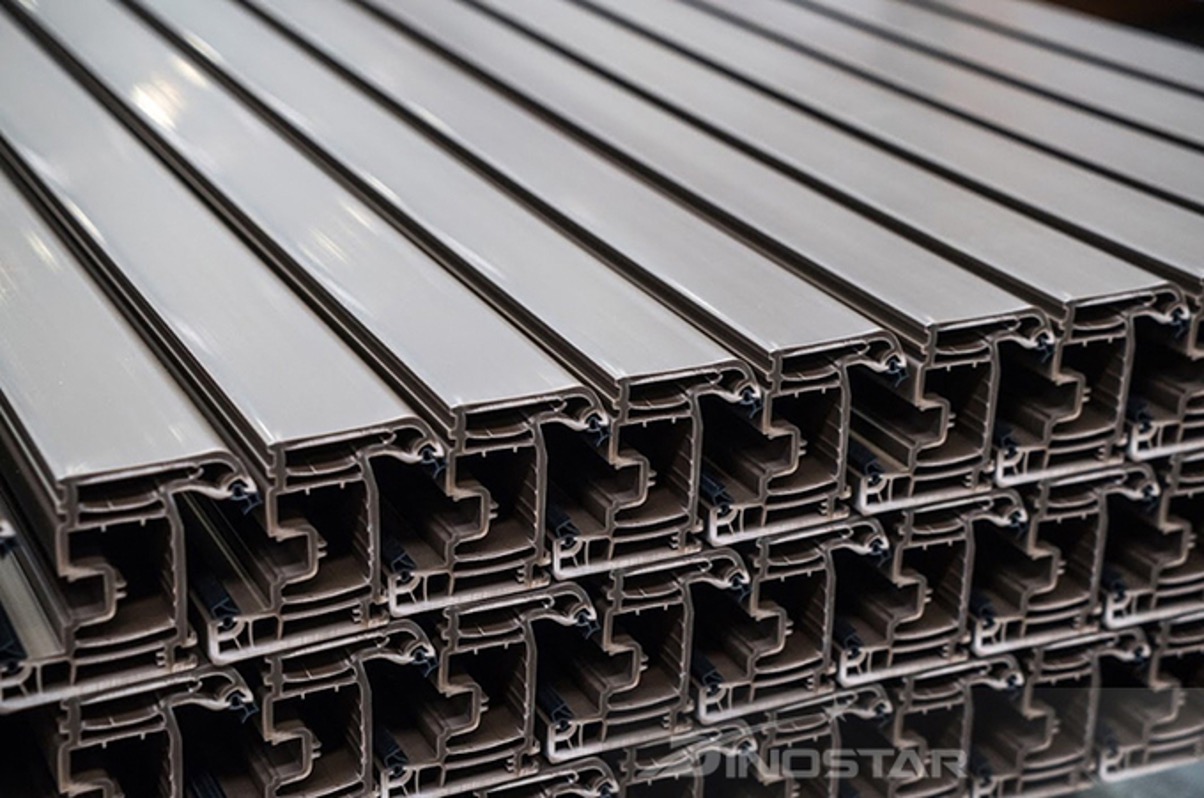
Có nhiều yếu tố quan trọng ảnh hưởng đến chất lượng của sản phẩm nhôm đùn
Practical Applications of Extruded Aluminum
Extruded aluminum is widely used in various fields due to its superior properties in terms of durability, thermal, and electrical conductivity. Here are the main applications of extruded aluminum:
- Architecture and Construction: Extruded aluminum is extensively used in architectural projects such as canopies, suspended ceilings, and walls, thanks to its sturdiness and light weight. Its rigidity helps save weight and provides the necessary stability.
- Electrical Systems: With good electrical conductivity, extruded aluminum is used to manufacture electronic products like modern LED lights, providing excellent heat dissipation through heat sinks or heat exchangers.
- Industry: In industrial applications, extruded aluminum is used to create products such as workbenches and machinery guards due to its flexibility in processing, light weight, and high durability.
- Transportation: Extruded aluminum is used in the manufacturing of components for trailers, helping to reduce vehicle weight and increase transportation efficiency.
- Display Equipment: In exhibition centers, extruded aluminum is often used to create display stands because of its flexibility in assembly, mobility, and high aesthetic appeal.
Stavian Industrial Metal – A Reputable Supplier of High-Quality Extruded Aluminum in the Vietnamese Market
Stavian Industrial Metal is one of the leading suppliers of high-quality extruded aluminum. With the mission of providing customers with standard aluminum products that meet all usage requirements, Stavian Industrial Metal always prioritizes product quality.
Stavian Industrial Metal’s manufacturing facility is equipped with modern production lines, ensuring precise and efficient production processes. The experienced technicians at Stavian Industrial Metal are always ready to advise and assist customers in selecting suitable products.
Customers who choose to purchase extruded aluminum from Stavian Industrial Metal are guaranteed the best product quality. Careful selection of raw materials and stringent production control ensure that the final products meet the highest standards.
Reference
- Popular Extruded Aluminum Types: Current Market Overview
- What is Aluminum Billet?: Features, Price, and Production Process
- High-Quality Aluminum Ingot
With a commitment to competitive pricing and professional after-sales service, Stavian Industrial Metal is confident in being a reliable partner for all projects involving extruded aluminum. For more detailed information and consultation, customers can visit Stavian Industrial Metal’s official website or contact directly.
View more other products
Contact form
